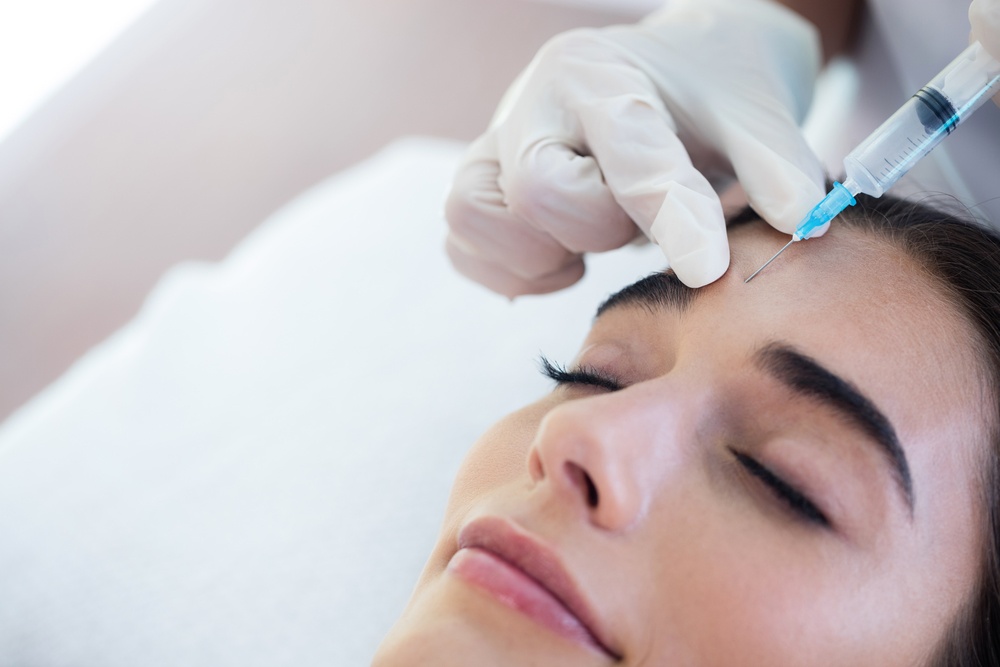 OnabotulinumtoxinA, which is commonly referred to as BOTOX® , is no longer used solely by aging film and television celebrities who wish to sport a more youthful appearance. BOTOX® is becoming more accepted as a treatment for migraine headaches. In many cases the success rate is impressive, with the majority of sufferers finding their headaches reduced in severity and/or frequency. In some cases, migraines have become a thing of the past.
OnabotulinumtoxinA, which is commonly referred to as BOTOX® , is no longer used solely by aging film and television celebrities who wish to sport a more youthful appearance. BOTOX® is becoming more accepted as a treatment for migraine headaches. In many cases the success rate is impressive, with the majority of sufferers finding their headaches reduced in severity and/or frequency. In some cases, migraines have become a thing of the past.
Although there are associated side effects, most migraine patients enjoy the therapeutic effects of BOTOX® without having to worry about side effects. Since BOTOX® is made from a substance that is potentially toxic, it is important for migraine sufferers to be mindful of these potential side effects.
Defining Your Migraines
BOTOX® may not be a suitable treatment for all sufferers. It depends entirely on how your migraine is defined:
- Chronic Migraine - You have 15 or more migraine attacks during the month, and each headache lasts for around four hours or longer.
- Episodic Migraine - Your migraines number around 14 or less headache days over a one-month period.
For those who suffer from episodic migraine, BOTOX® may not be either safe or effective and is not normally offered as a treatment.
Understanding Risks and Side Effects
Most people who receive BOTOX® treatment for migraines have no severe side effects at all, and carry on with their normal daily activities without hindrance. As with all medications and treatments, however, there is a small percentage of people who experience unwanted effects following BOTOX® injections. According to Allergan, the manufacturers, this percentage is around 9% for the most common side effects.
It’s important to understand the associated risks and possible side effects before undergoing a course of treatment, both for your own safety and so that you don’t become unduly alarmed. Awareness of what may happen gives you confidence that you’ll know how to proceed, who to contact, and whether the symptoms need treatment at all.
How is BOTOX® Administered?
The standard treatment consists of 31 BOTOX® injections into different areas of the head, neck and shoulders, specifically:
- The forehead
- The bridge of the nose
- The temples
- Back of the head and neck
- Upper back
Most people find the BOTOX® injections are not particularly painful, although a slight burning sensation is common where the injection is performed. Some find the number of injections alarming, although the process is very quick (no longer than ten to fifteen minutes) and the needle very fine. All this takes place in a standard examination room and most patients pick up their normal activities immediately afterwards.
How often is BOTOX® Migraine Treatment Repeated?
A normal course of treatment takes place over a period of 15 months and consists of a set of injections every three months. Some patients find they improve to such an extent that BOTOX® therapy can be discontinued without relapse into chronic migraine.
It’s normal to not see any improvement for up to a couple of weeks following the first treatment, and some patients see no improvement at all. For those who find their migraines are not improved after two or three treatments, it’s probable that the therapy is not suitable for them and is unlikely to work in the future.
Immediate Side Effects
You may notice small bumps or lumps on your forehead immediately after the procedure, but this is normal and they will subside after a few hours. Applying an ice pack may shorten this time. A few people find the treatment brings on a headache that can sometimes be severe. If you have a headache at the time of treatment, you shouldn’t expect the BOTOX® to immediately take away that pain. In most cases, the full benefit isn’t felt for up to two weeks after the treatment is complete.
Other Side Effects
Other side effects may be slower to appear following BOTOX® treatment for migraines, and it’s important you monitor your own health for any changes in how your body responds or feels. The most common and least serious of these side effects include:
- Muscle weakness where the injections occurred
- Some bruising, swelling or bleeding at the injection sites
- Rashes
- Headaches
- Drowsiness or feeling dizzy
- Cold or flu-like symptoms including sore throat or runny nose
- Dry mouth or eyes
Other side effects include those that are more severe and, while you should report ANY side effects to your doctor, any of the following symptoms should be treated immediately:
- Trouble with breathing or talking
- Difficulty swallowing
- Uneven (fast or slow) heartbeat
- Vision problems or drooping eyelids
- Pain in the chest, arms or shoulders
- Bad skin rashes or itching
Taking Other Medications with BOTOX®
Most migraine sufferers have an arsenal of medications that they use to combat headache pain and associated migraine symptoms. The good news is that it's perfectly okay to carry on taking prescribed medication alongside BOTOX® treatments. Research and experience indicates that migraine medications may assist BOTOX® in helping chronic migraine sufferers scale back to migraines that are more episodic.
If you think BOTOX® may be a suitable treatment for your migraine, talking to your neurologist is the first step. He or she can explain in more detail what the process involves and explore the possibilities for your individual situation.



